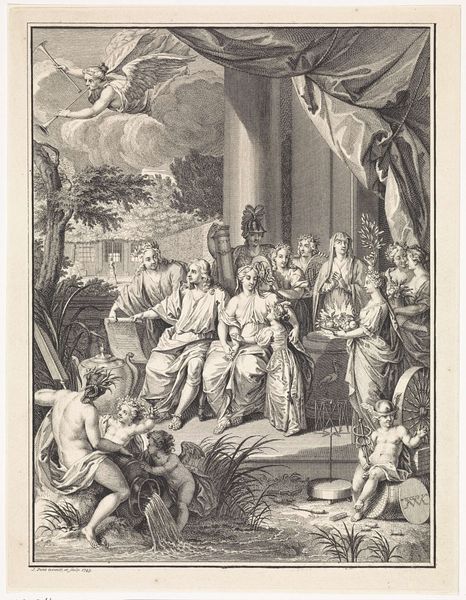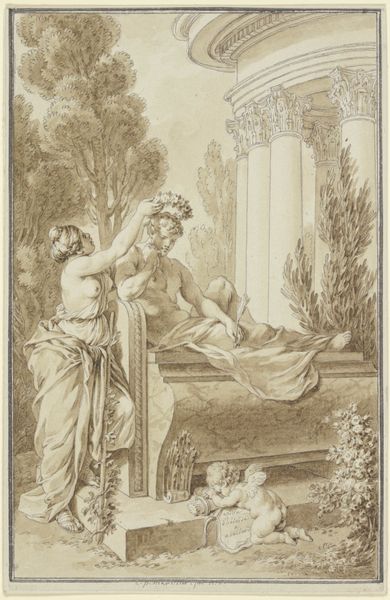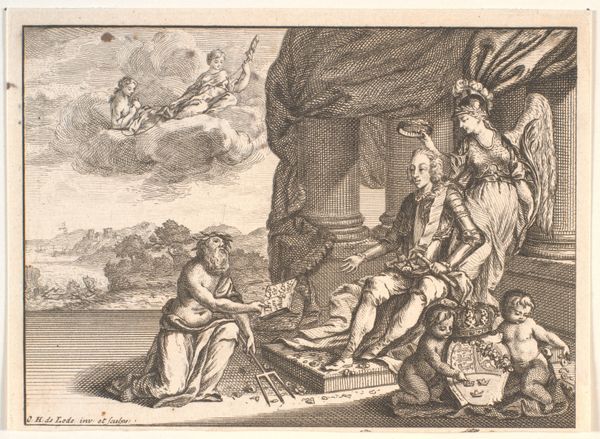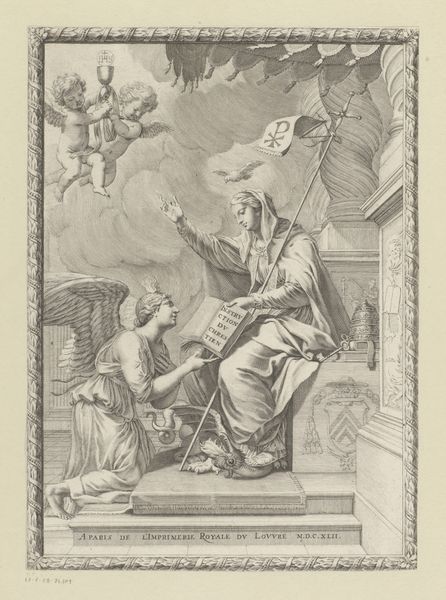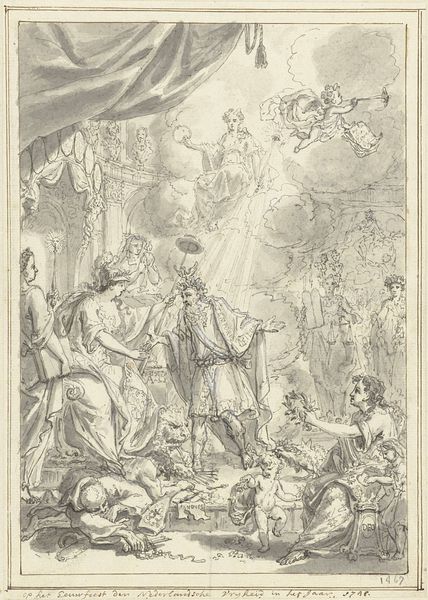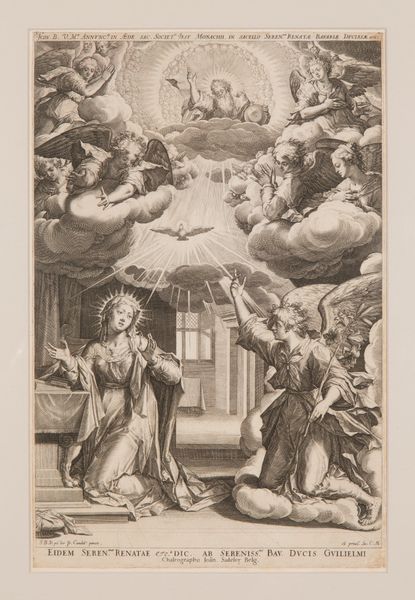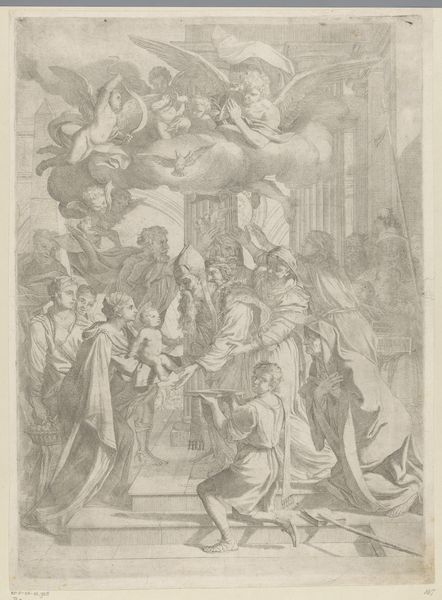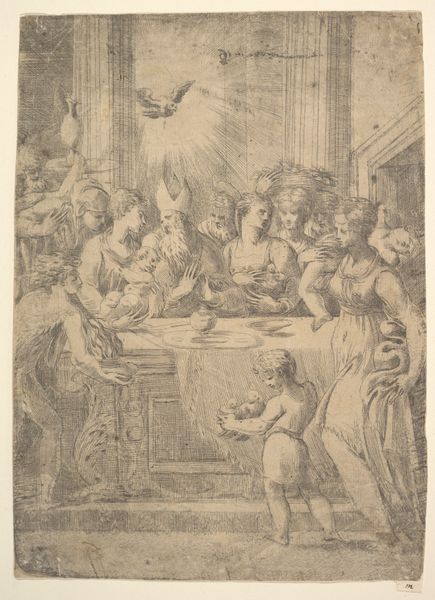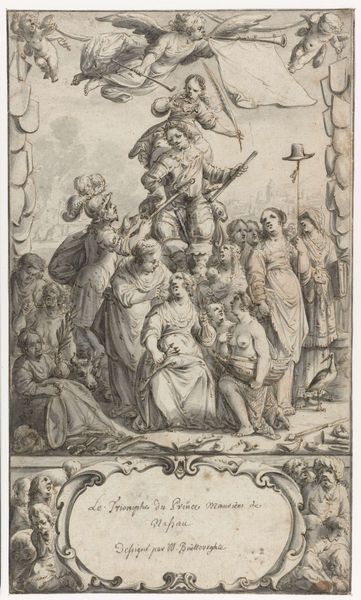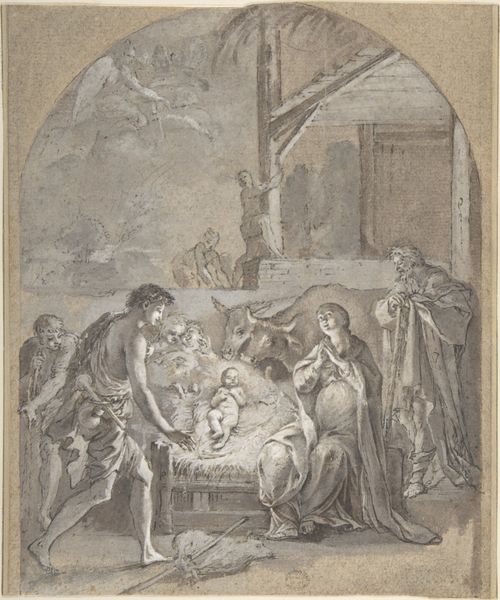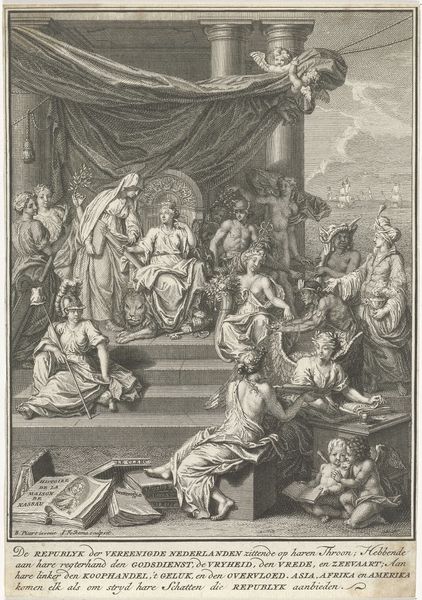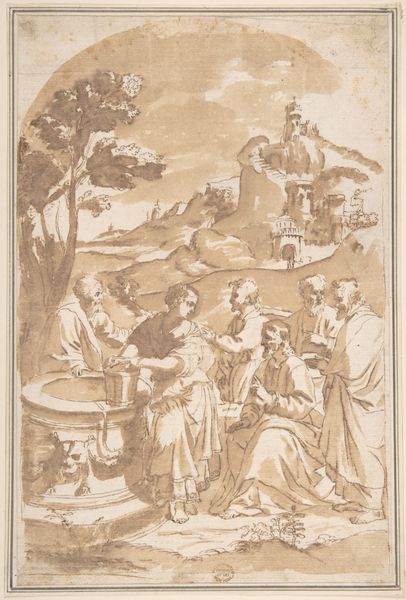
drawing, print, etching, ink, pen
#
portrait
#
drawing
#
allegory
#
baroque
# print
#
pen sketch
#
etching
#
pencil sketch
#
figuration
#
ink
#
pen
#
history-painting
Dimensions: height 167 mm, width 118 mm
Copyright: Rijks Museum: Open Domain
Curator: This is a work titled "Zinnebeeldige voorstelling," which translates to "Allegorical Representation." It was created by Jan Goeree, likely between 1680 and 1731, and it currently resides here at the Rijksmuseum. Editor: It’s a very busy composition. My eye bounces all over the place! Lots of figures rendered in pen and ink... quite an active tableau. Curator: Indeed. Goeree utilized pen, ink, and etching to craft this intricate drawing. As the title suggests, it's rich in allegorical symbolism, a common characteristic of Baroque art. Editor: Right, you can definitely see that Baroque sensibility. All of the textural work that makes up the figures…it almost appears manufactured—carefully pieced together, which in some ways it literally is considering the processes in printmaking at this time. I'm thinking of the paper, the inks used for both writing and design, the pens used for the original illustration... Curator: It is fascinating how those choices influenced the subject. Note the figure of Justice with her scales, juxtaposed against Father Time pouring from an urn. This was clearly designed to be consumed by a highly educated audience, familiar with classical and mythological references. It really reflects the values and intellectual climate of the period. Editor: But were the processes easily accessible? Pen and ink are, but what about print? I'm especially struck by the fact that a group of cherubic figures surround what seems like a blank tablet at the base of the composition. Curator: An interesting point. You’re right to emphasize how knowledge itself is represented. The cherubs might signify the nascent stage of understanding, their activities hinting at how it becomes cultivated and honed. And this print would become part of that circulation. Editor: It does makes me wonder, how images such as this affected workshops? And I wonder how an artisan would’ve worked and possibly reproduced something such as this? And for what price point? Curator: Ultimately, a work like Goeree's reveals how art functioned within the social and intellectual structures of its time. The themes it explores, the choices in materials… it all becomes deeply intertwined. Editor: Agreed. And for me, analyzing what something *is made of*, tells us just as much, if not more, about the social implications of its day. The material history helps paint a broader picture.
Comments
No comments
Be the first to comment and join the conversation on the ultimate creative platform.
